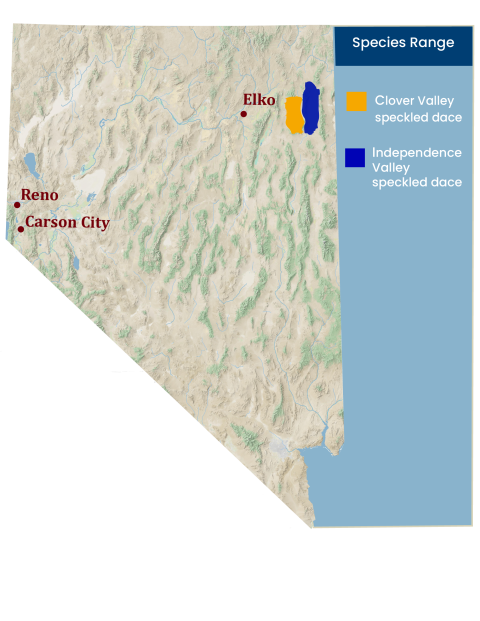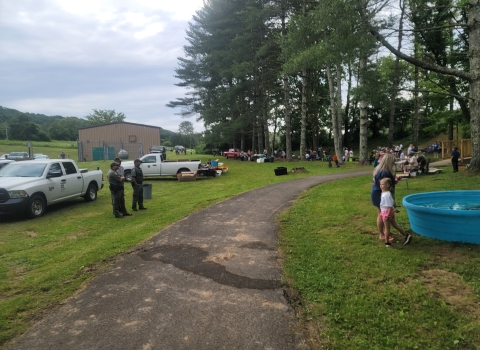The U.S. Fish and Wildlife Service office in Reno, Nevada, received $115,000 during fiscal year 2024 from the Inflation Reduction Act to aid in scientific monitoring for Clover Valley and Independence Valley speckled dace, both of which are protected by the Endangered Species Act. The monitoring is necessary for biologists to understand how changing water availability, climate change climate change
Climate change includes both global warming driven by human-induced emissions of greenhouse gases and the resulting large-scale shifts in weather patterns. Though there have been previous periods of climatic change, since the mid-20th century humans have had an unprecedented impact on Earth's climate system and caused change on a global scale.
Learn more about climate change , and other threats may affect the species, and therefore better understand how to recover the daces. Both are found in northeastern Nevada and are endangered largely due to the main threat of habitat modification. These threats are compounded by each fish’s respective range, which are limited to a small number of springs located in Clover Valley and Independence Valley.
According to Service biologists, the money helps to fund both water quality and genetic monitoring, and genetic sampling. The funding is important for understanding how each species is affected by present habitat conditions. Water quality monitoring reveals if the habitat is suitable for the species and will show any pollutants in the system. Fish species with a limited range and small population are especially vulnerable to changes in water quality because they don’t have the ability to migrate to more suitable conditions.
Independence Valley Speckled Dace
The genetic sampling of Independence Valley speckled dace will provide insight into the diversity of its gene pool. High genetic diversity results in a healthier, more resilient population. According to the Independence Valley speckled dace, the last time the species was extensively surveyed was in 2008, while there have been smaller scale monitoring efforts since then by the Nevada Department of Wildlife. In 2022 NDOW trapped 300 dace, confirming their presence in their historical wetlands, yet more consistent monitoring is needed to understand population trends
Jessica Sáenz, a fish and wildlife biologist for the Service helped secure the funding for the genetic sampling to increase resources dedicated to recovery of this lesser-known small desert fish. “I was super excited to receive this funding because there hasn’t been much work done on [Independence Valley speckled dace] since 2008.”
Clover Valley Speckled Dace
The funding will also be used to help understand the environmental impacts on Clover Valley speckled dace’s declining population. In 2018, a fire near Clover Valley speckled dace habitat was followed by a large rain event. “We are using the water quality monitoring to determine if the sediment from this event is responsible for the population crash we have seen,” said Sáenz. According to NDOW surveys, the 2018 population of dace in the springs was estimated to be around 104 individuals, the following year only 14 individuals were found, and in 2020 only two were found. The population has seen a persistent decline in more recent years.
While surveys for Clover Valley speckled dace have been consistent, water quality has never been monitored, something that has become necessary as two of the three remaining populations have declined in recent years.
Clover Valley and Independence Valley speckled dace are considered narrow endemic species. This means that they have limited habitat ranges, and within the whole world the species only exist within these small pieces of habitat. Nevada has many endangered, narrow endemic species, and being able to understand the species and their habitat better through efforts like this plays a key role in recovery.
For more on the species mentioned in the article and the work of the Reno Fish and Wildlife Office, visit fws.gov/office/reno-fish-and-wildlife.





